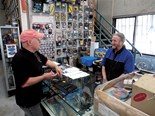Recommission your classic
























.jpg)
.jpg)
.jpg)
.jpg)

|

|

|

|

|

|

|

|

|

|

|

|
.jpg)
|
.jpg)
|
Covid lockdown is over and it's time to drive the toy. Before you do...
Okay, so Covid lockdowns have finally stopped. You still can’t go into a shop without a mask, public transport still strikes you as a game of Russian roulette and somebody sneezing two suburbs away still makes you want to close the windows.
But at least you can finally pull the covers off your weekend car and take it for a blatt down your favourite piece of blacktop without being fined by the rozzers. But what have those months of enforced nothin’-doin’ done to your car? It’s a pretty well-known fact that cars don’t like sitting around doing bugger all any more than we do. And just like us, leaving a car without regular exercise can lead them to become a bit creaky in the knees. So what’s the best way to coax the old dear back into life and get it interested in a gallop?
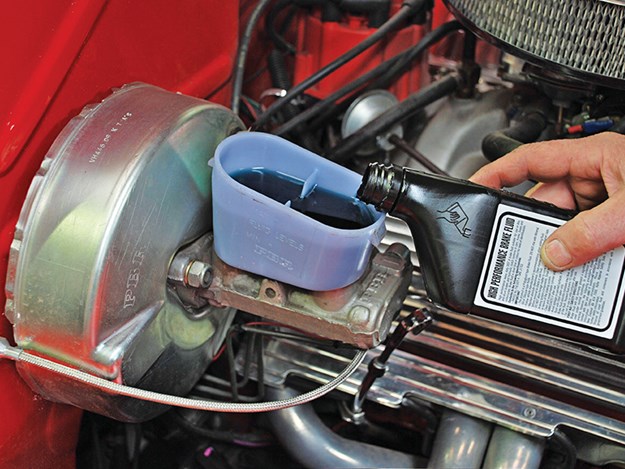
Check, top up or preferably replace the fluids
A lot of this stuff is personal preference, but we’ll spell it out for you anyway. But to start with, before you put the key in the ignition…don’t. There are a few jobs to do before you try starting the engine for the first time, so let’s tackle that stuff first. At least the night before you plan your first run, bung the battery on the charger. Starting an engine that has sat for a while can take lots of cranking, so make sure the battery is up to the job of winding the engine over more than usual. This exercise will also tell you whether the battery itself has survived the lay-up.
If the oil was changed not too long before lockdown, you might not need to change it. That said, it’s been sitting through a damp winter, right, so maybe there’s some condensation that shouldn’t be there. The safest bet is to give the car an oil change. Nobody ever damaged an engine by looking after it too carefully. Same goes for the coolant. Maybe you did the smart thing and drained the radiator when the lockdown first happened. If so, for gawd’s sake don’t forget to refill the rad. Give the hoses a squeeze to make sure they haven’t gone soft or brittle, too.
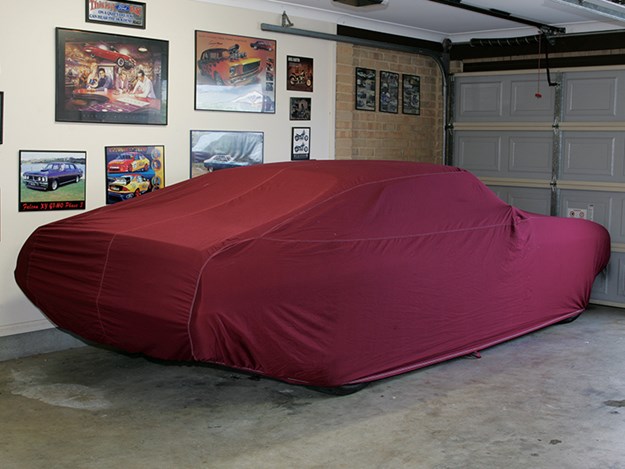
Hibernation station. Remove the cover and run a complete check before you start it
Thanks to the unpredictable nature of modern ULP fuel, we’re inclined to swap the spark plugs for a new set, too. Sometimes a car left standing will fire up and run for a short period of time, then develop the staggers and then refuse to even fire. Nine times out of ten, it’ll be the spark plugs that have been murdered by stale fuel. And you can clean those plugs till the cows come home; once they’ve sooted up from old fuel, they’ve had it. Don’t ask me why, just trust me that it’s a fact. Don’t forget to gap the new plugs as they don’t necessarily come pre-gapped from the shop.
| Read next: Running your car after short-term storage
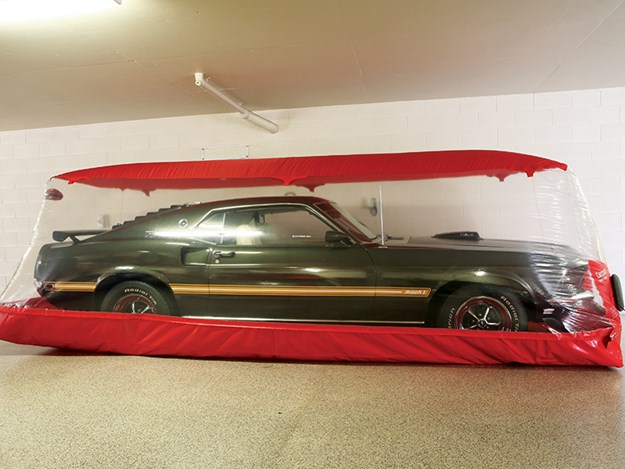
While the bonnet is up, give the car a complete once-over. You know the drill, the level and colour of the brake fluid, tyre pressures, clutch fluid, check the fuel filter for accumulated gunk, check the drive belts for condition and tension, make sure mice haven’t eaten the air-cleaner element (you’d be surprised) file the white gunk off the inside contacts of the dizzy cap and, then do a quick lap of the car checking for blown globes and anything loose. For some reason, light globes tend to blow pretty soon after a lay-up. Maybe they take in moisture just sitting there…who knows. But it’s a fair bet you’ll be replacing some of them in the next few weeks or months. Have a supply handy.
| Read next: Brake fluid - tips of the trade
Now’s the time to wash the car and clean the windows. Everybody knows clean cars run better, and cleaning the polymer fallout (from the interior plastics) that collects on the inside of the glass just makes sense.
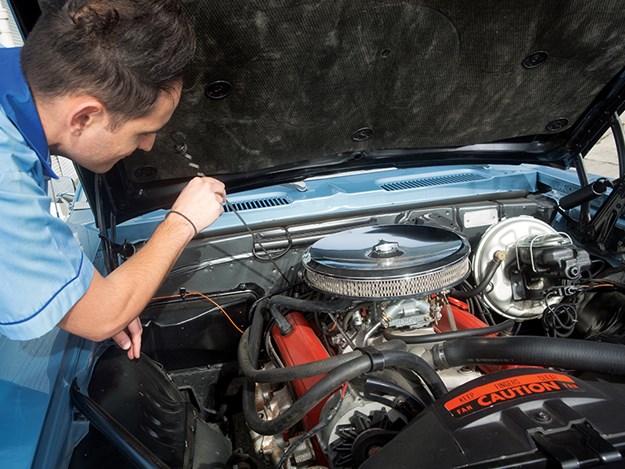
Is the oil clean and good to go?
Once you have the engine started and the car outside, let it run for a while until it will idle smoothly and without the need to rev it. Some cars will need a squirt of ether (or brand-name starting fluid) down the carb for that first jolt into life, but a few ml of petrol can be just as effective. Careful, though, you don’t wanna blow up your workshop (it has happened). I know the best advice is to drive a car gently more or less from the moment you start it, but if it’s been a while, it won’t hurt to just let it idle while you listen for any noises that shouldn’t be there. It’s worth grabbing the multi-meter and checking that the alternator is charging properly, too, at this point.
| Read next: The ins and outs of car storage
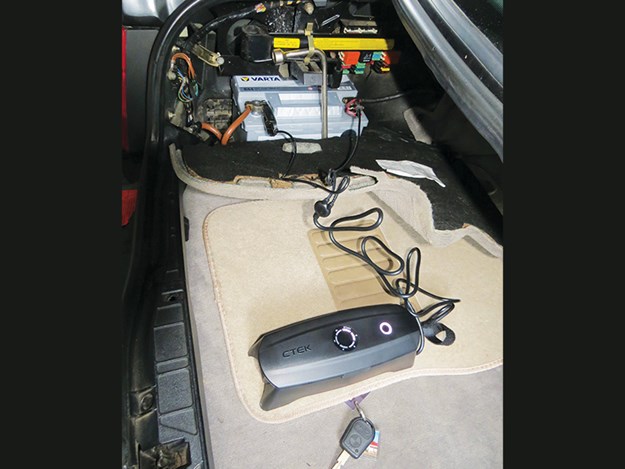
Charge the battery the night before start up
Once the engine has started to warm up a bit, ease it into gear and take it very gently for the first few minutes. Remember that while the engine is warmed up a little, the gearbox and diff are still stone cold. Check that the brakes are working properly and not pulling to one side, and make sure the clutch is happy and neither slipping nor juddering. In same cases, you’ll find that a manual car will refuse to select a gear with the engine running. That’s often down to the clutch plates having locked together over time and the best fix is to switch off the engine, put the car in gear and crank it with the clutch out. Most times, that’ll be enough to free off the clutch plates and away you go. It’s a damn sight easier that pulling out the gearbox to do it manually, too. Definitely worth a shot.
| Read next: The importance of oil & filter change
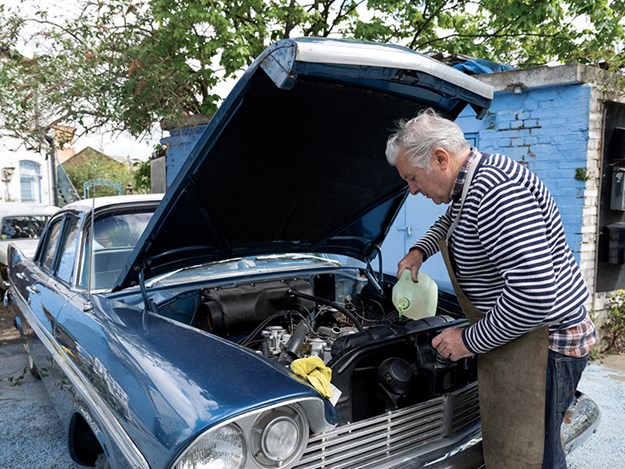
Check the fluids
There’s a very good chance that the car will feel like it has square tyres for the first few kilometres. That’s because it kind of has. By sitting in one position for months, the tyres develop flat spots. Having the correct pressure in them will help, but ultimately, you’ve got to drive far enough to get some heat in them before the rubber softens enough and they resume their correct shape. It’ll happen, don’t sweat it.
| Read next: Maintaining car batteries during winter

A tank of fresh fuel will do wonders
The bottom line, of course, is that you need to take the car for a decent trip, not a five-minute wander in traffic where you don’t get out of third gear. You need to get everything warmed up properly, and use all the gears. Give the brakes a couple of decent taps to check them out and clean the spiders out of the calipers and, again, listen carefully for any noises that weren’t there before Covid. Once you’ve done all that, let her cool down overnight and then go and check the same things one more time. Check under the car for pools of anything that shouldn’t be there and with a bit of luck, your car has survived Covid unscathed.
| Read next: Cold engine starts in classic cars

With all that done, you can then give the car a full detail and be ready for a cruise next weekend. And with a bit of luck, I’ll see you out there.

From Unique Cars #461, Jan 2022
Unique Cars magazine Value Guides
Sell your car for free right here
Get your monthly fix of news, reviews and stories on the greatest cars and minds in the automotive world.
Subscribe

.jpg)







